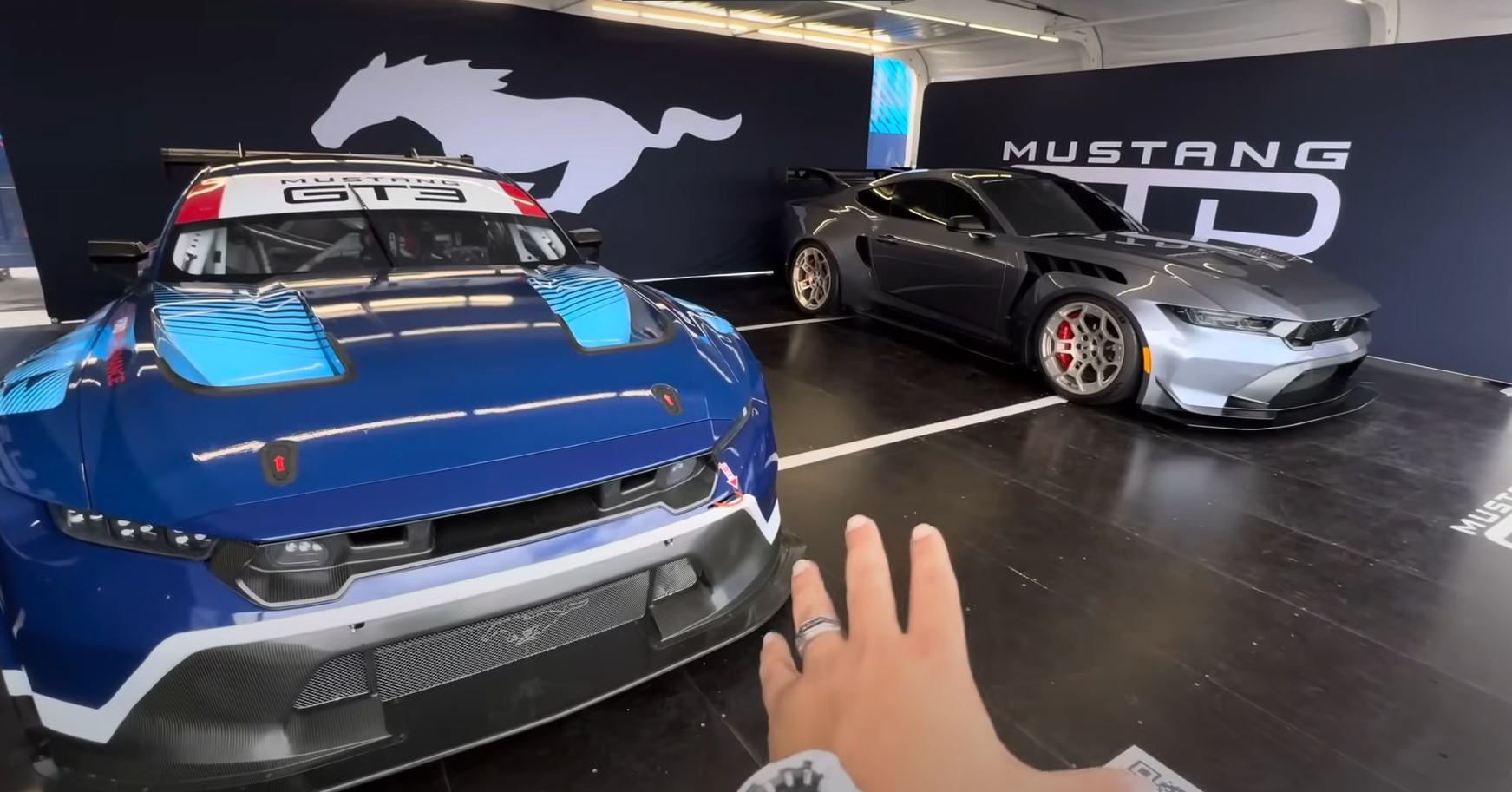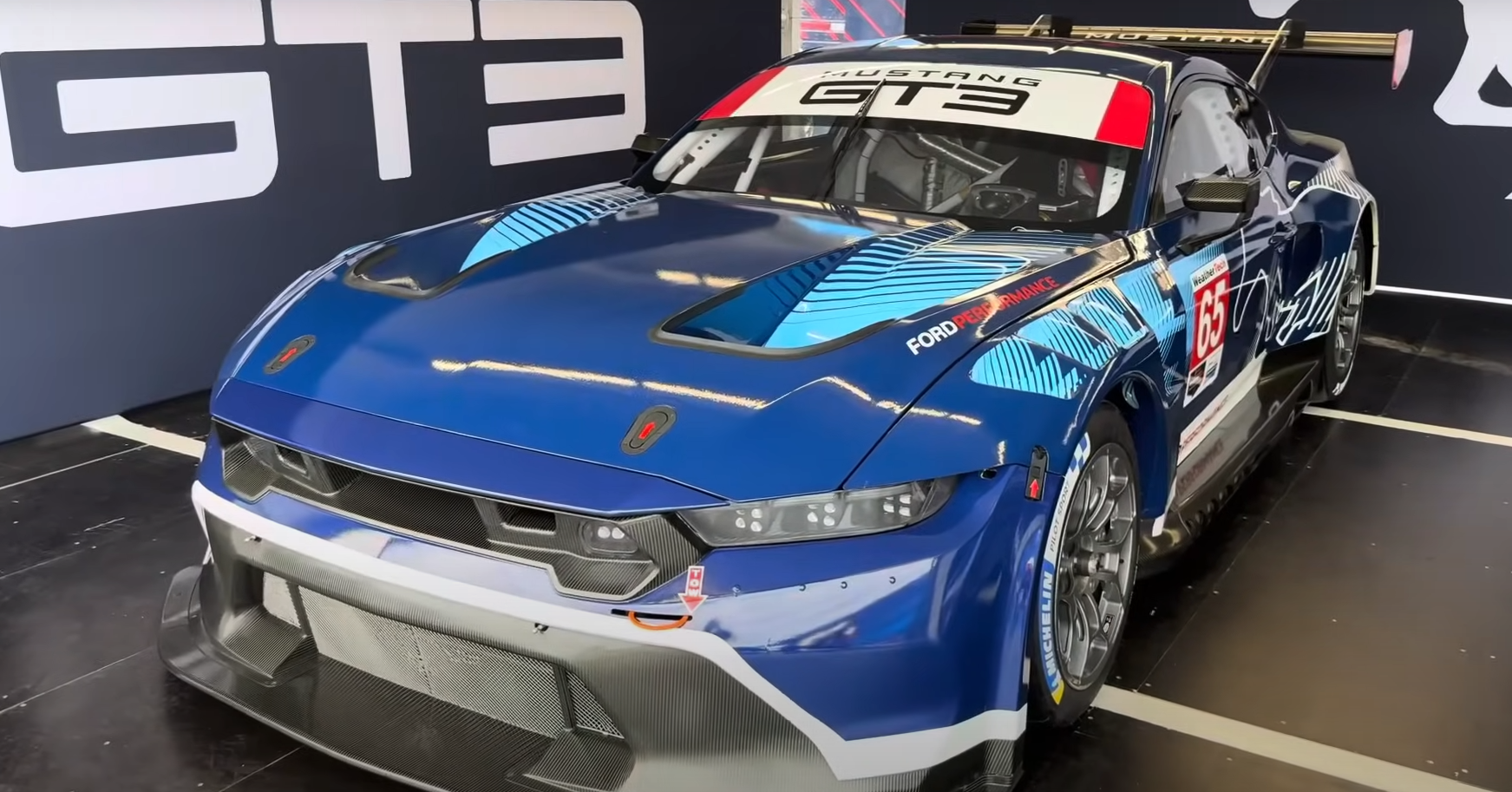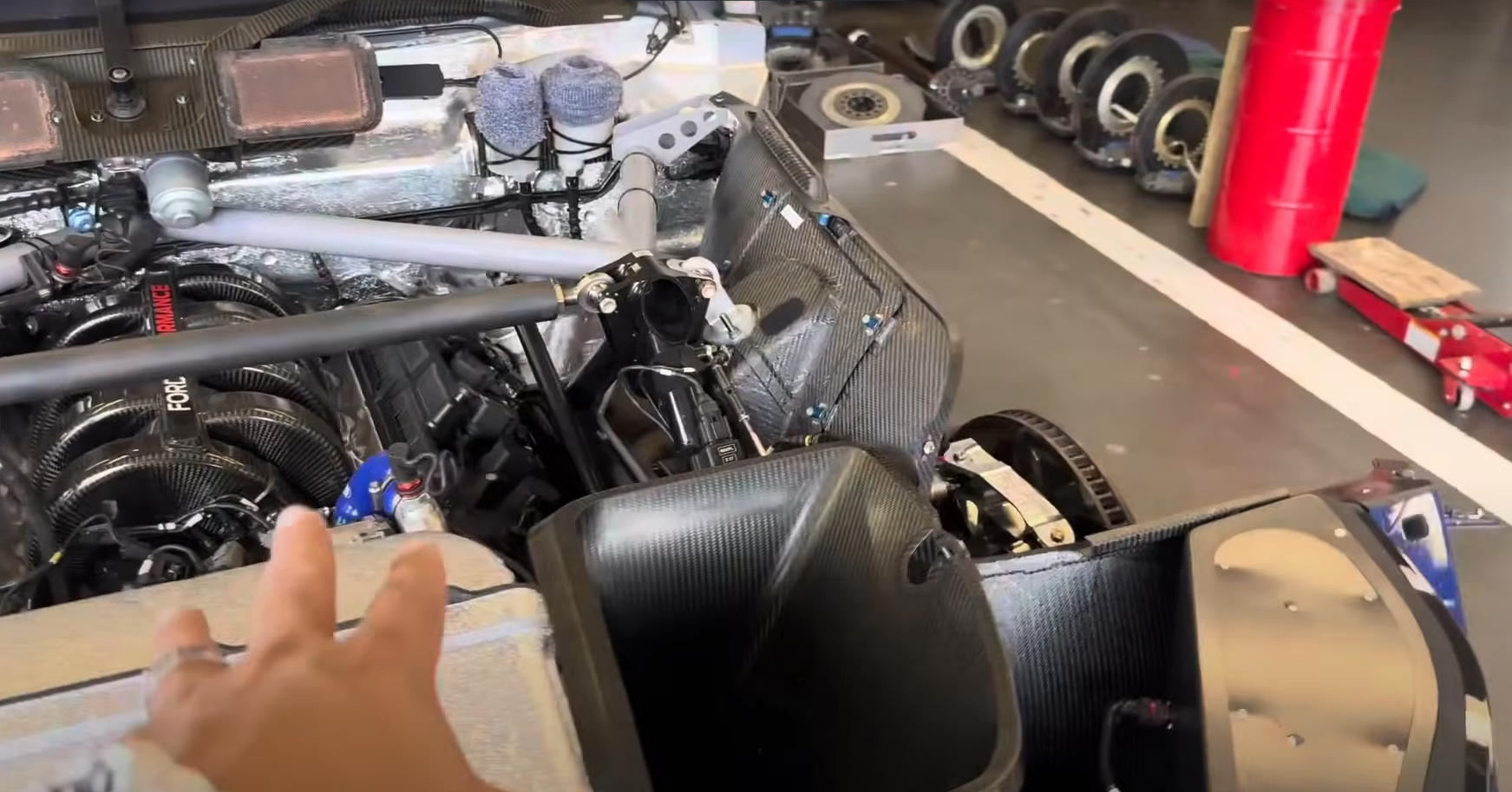The Mustang GTD and GT3 represent two important versions of the Ford Mustang, each built with a different purpose in mind. While the GT3 is strictly for racing under defined rules and limits, the GTD is a street-legal supercar sharing much of its technology and design. Both cars carry strong performance features, with engines based on the well-known Coyote V8, but their setups and allowable components differ due to their specific uses.
Fans can see features like advanced aerodynamics and engineering solutions that connect both models, showing Ford’s effort to balance power, control, and innovation. These cars not only continue the Mustang legacy in motorsports, especially at races like Daytona, but also bring race-inspired technology to everyday driving.
Key Takeaways
- GTD and GT3 Mustangs have different uses and designs.
- They share engine roots but use unique parts for each application.
- Both show Ford’s focus on combining racing tech with real-world driving.
Mustang GTD vs GT3: Main Contrasts
Intended Function and Use
The Mustang GTD and GT3 serve different roles. The GTD is built for buyers who want a street-legal car with race-inspired features. It can be driven daily and is also equipped for high-performance driving. The GT3, in contrast, is made specifically for professional racing events like the 24 Hours at Daytona. It follows strict racing rules and is not designed for public roads.
Here’s a simple comparison:
| Model | Street Legal | Race Ready | Main Focus |
|---|---|---|---|
| GTD | Yes | Yes | High-performance road |
| GT3 | No | Yes | Professional racing |
Approach to Design
The design of both cars takes inspiration from each other, but they are not the same. The GT3 has many restrictions because of racing rules—it can’t use things like active aerodynamic parts. For example, its rear wing must follow certain guidelines.
The GTD borrows ideas from the GT3 but adds features that are not allowed in racing. It uses an active rear spoiler and DRS (Drag Reduction System) to boost top speed and balance. This lets the GTD get strong downforce and speed without the usual trade-offs. The car also has a wide body and lightweight materials to improve handling.
Power and Driving Capabilities
The GTD has a supercharged V8 engine with over 800 horsepower. Its transmission is in the back, and it has special features for better speed and handling on the road.
The GT3 uses a race-tuned engine based on the same Coyote block as the GTD, but it is made for endurance races and has to follow rules that lower its power. It has restrictors in its air intake, so its horsepower depends on the race’s requirements. The engine is placed low and far back in the car for better weight balance. The focus is on lasting through long races, so cooling and reliability are key.
Key points:
- GTD: Over 800hp, active aero, street and track use.
- GT3: Lower, adjustable power (due to rules), built for racing and endurance.
Engine and Powertrain Information
GTD Supercharged V8 and Gearbox
The GTD model uses a supercharged 5.2-liter V8 engine. This engine is built for high performance and can produce between 800 and 850 horsepower. Its layout is not mid-engine, but it uses a rear-mounted transaxle. The gearbox is placed at the back of the car. This setup helps with weight distribution and handling.
A dry sump oil system is included, which allows for a lower engine position and more space for aerodynamics. The GTD takes features from racing, such as a widebody design and active aerodynamics.
Key Points:
- 5.2L supercharged V8
- Over 800 horsepower
- Rear-mounted transaxle
- Dry sump oil system
GT3 Racing Coyote Motor
The GT3 car uses a Coyote-based engine similar to the one found in production Mustangs. The engine is modified with a larger bore and stroke, resulting in a 5.4-liter displacement. The cylinder block and heads remain similar to standard versions, and many parts like the valve train and crankshaft are shared with production models.
Engine Specs Table:
| Feature | Details |
|---|---|
| Engine Base | Coyote V8 (S650 Mustang derived) |
| Displacement | 5.4 liters (94 mm bore x 96.5 mm stroke) |
| Fuel Delivery | Direct injection only |
| Cooling | Large radiators and oil coolers |
| Transmission | Rear-mounted transaxle from Xtrac |
| Valve Train | Mostly standard components |
| Crankshaft | Production matching forging |
The motor is placed deep and low in the engine bay to improve the car’s balance. Only direct injection is used to keep the system simple and reliable for long races. The engine bay includes large ducts to channel air for cooling the motor and oil.
Limits on Displacement and Horsepower
Race regulations set strict rules on engine power and size. Engines are limited by intake restrictors that control airflow. These restrictors keep power in check according to each racing series’ rules. For example, the IMSA and WEC series have their own power limits, so the car’s output changes depending on where it races.
Because of these limits, teams must tune the engine carefully. They spend many hours on the dyno to adjust for things like air temperature and pressure, so the engine works well no matter the restrictor size. The goal is to keep performance high while still meeting every race’s requirements.
Summary Table:
| Regulation Type | Impact on Engine |
|---|---|
| Restrictors | Reduces airflow and power |
| Series Specific Limits | Different power levels for each series |
| Engine Mapping | Adjusted for maximum reliability |
Air Flow and Frame Design
Rear Spoiler and Ground Pressure
The rear spoiler stands out with a unique “goose neck” shape that attaches to the roof pillar. This spot was chosen because it is the stiffest and strongest place on the back of the car. The design helps manage the heavy forces created by ground pressure at high speeds. Unlike the pure race car version, the street car’s spoiler has a moving flap. This flap can adjust to control ground force, making it possible to reach performance levels similar to race cars while maintaining road usage.
| Feature | GT3 Race Car | Street Car Variant |
|---|---|---|
| Spoiler Mount | Attached to roof pillar | Attached to roof pillar |
| Moving Flap | Not allowed | Included |
| Ground Pressure Level | Very high | Nearly as high |
Adjustable Drag Features
This model uses an adjustable drag feature to balance power and handling. When racing in a straight line, the drag system flattens the rear flap, lowering both ground force and air resistance. This feature helps boost top speed while keeping car control steady. Without this system, drivers would need to choose between having high ground force for corners or better top speed. Now, they get both with the touch of a button.
Key points:
- Drag system active only on straight roads
- Flap reduces both drag and ground force
- Enables higher top speeds
Bottom Shape and Heat Management
The shape under the car is smooth and sculpted to move air quickly and create a strong ground effect, much like the Ford GT. This leaves little to no space for storage in the front of the car because of the large underwing. The engine uses a dry oil system, so the bottom of the engine is flatter than usual, making more room for air to pass smoothly. Large air channels and cooling ducts direct fresh air to both the engine and oil coolers, helping the car handle long races and high engine temperatures.
- Flat underbody for strong ground effect
- Dry oil system allows a smoother shape underneath
- Cooling ducts move air to engine and oil systems
Cooling Components Table:
| Component | Location | Function |
|---|---|---|
| Air Ducts | Front end | Brings air to cooling areas |
| Radiator | Engine bay | Cools engine temperature |
| Oil Cooler | Engine bay | Lowers oil temperature |
Racing Technology and Innovations
Balancing Vehicle Mass for Performance
Teams carefully adjust where the weight sits in the car. By setting the engine low and towards the back, they help the car handle better on the track. Making the engine as slim as possible gives more freedom to move it for the best balance.
Engineers even shape the firewall and the back of the engine to fit everything deeper into the car. This focus lets the car corner faster and feels steadier at speed.
Trustworthy Fuel Injection Choices
For racing, engines use only direct fuel injection. This choice makes things simpler and cuts down possible problems during long, tough events.
Direct injection means the team doesn’t have to worry about problems that could show up with extra parts like port injection. Using fewer parts helps the car keep running strong during hours of racing.
Special Setups for Long-Distance Races
Cars are set up to survive long races like the 24 Hours at Daytona. They use heavy-duty cooling systems with big ducts to direct air over both the engine and oil coolers.
The team spends lots of time running tests on the engine so it works well with air restrictors used in some races. These changes help keep the car running at a steady temperature and still making good power, even after many hours on the track.
| Feature | Purpose | How It’s Used in Racing Cars |
|---|---|---|
| Low Engine Placement | Better weight balance | Engine sits deeper and farther back |
| Direct Injection Only | Improved reliability | Fewer failure points, no port injection |
| Heavy-Duty Cooling | Survive long races | Large ducts and sealed engine bay |
| Air Restrictors | Meet race rules, safe performance | Carefully tested to keep engine happy |
Comparing Standard and Racing Car Parts
Engine Block and Head Similarities
Many parts between the production Mustang and the race car version are very similar. Both use the same engine block casting and cylinder head casting as found in the standard Mustang. The valve train and even the crankshaft come from production models and share the same forging.
| Component | Standard Mustang | Race Car Version |
|---|---|---|
| Engine block casting | Yes | Yes |
| Head casting | Yes | Yes |
| Valve train parts | Yes | Many matched |
| Crankshaft forging | Yes | Yes |
These shared pieces show how strong and reliable the base engine design is in both everyday and high-performance settings.
Custom Features for Racing
Racing vehicles must meet strict rules, so they need special changes that are not seen in regular cars.
- The engine in the race car is bored and stroked for more displacement.
- Special restrictors are used to limit airflow and power, based on race series rules.
- The race version uses dry sump oiling to lower the engine and help with weight balance.
- Cooling and airflow are adapted for racing, with bigger ducts and sealed bays for better temperature control.
These changes help the car last longer in endurance races and keep the engine running well, even with power limits and long hours on the track.
Mustang Legacy at Daytona
The Mustang holds a standout presence at Daytona, with both the GTD and GT3 models making their mark. The GTD model, inspired by the GT3 race car, brings a powerful V8 supercharged engine and an advanced aerodynamic design. This car features a distinctive rear wing and a drag reduction system (DRS) to balance downforce and top speed.
Key Features of Mustang GTD at Daytona:
- Engine: V8 Supercharged, based on the familiar Coyote engine
- Horsepower: 800-850+ hp
- Transmission: Rear-mounted, transaxle setup
- Aerodynamics:
- Advanced rear wing
- DRS for improved straight-line speed
- Large underbody wing influences airflow and grip
- Chassis: Widebody, lightweight construction
- Race Debut: Scheduled for 24-hour competition
The GT3 Mustang, used in endurance racing, also draws from the production Coyote engine. This engine is bored and stroked to 5.4L for maximum displacement and efficiency. Components like the block and cylinder heads are shared with production models.
Race-Ready Adaptations for GT3:
| Component | Details |
|---|---|
| Engine | 5.4L V8 (bored and stroked Coyote) |
| Fuel System | Direct Injection |
| Cooling System | Large radiators, oil coolers, ducts |
| Horsepower | Adjusted per race series regulations |
| Reliability Focus | Hours of engine mapping on dyno |
Both the GTD and GT3 Mustangs feature engineering solutions geared for long-distance racing at Daytona. The GT3’s engine is set deep in the bay for better weight distribution, and follows race rules with air restrictors tailored to each competition.
The Mustang’s engineering at Daytona highlights performance, heritage, and adaptability, blending road car DNA with technology from top-tier motorsports.







